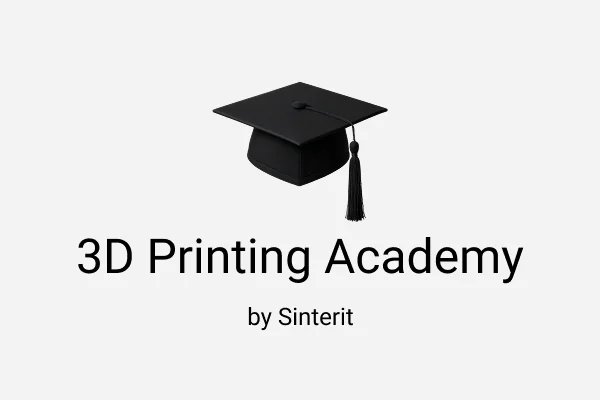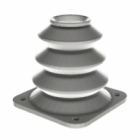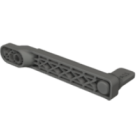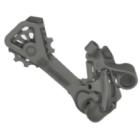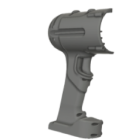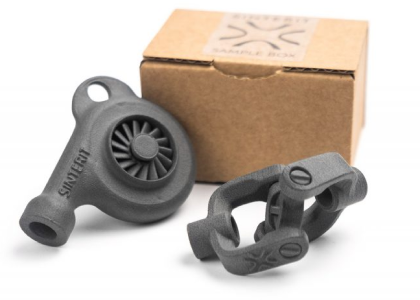FAQ: Understanding the full Sinterit offer — printers, materials, accessories & software
What products and solutions are included in Sinterit’s full SLS 3D printing ecosystem?
Sinterit’s compact SLS ecosystem spans two active printers (SUZY and Lisa X), dedicated software (Sinterit Studio, with optional Advanced features), validated polymer powders, and an integrated set of accessories for safe, clean powder handling and finishing. Core accessories include the ATEX/Intertek Vacuum Cleaner, Powder Separator, Powder Sieve, Sandblaster SLS, and the Multi PHS (Powder Handling Station). The ecosystem is designed as an end-to-end workflow from build preparation to post-processing, with facility guidelines, training, and support to accelerate onboarding.
What are the main differences between Sinterit Lisa and Lisa X printers?
Lisa is a legacy/discontinued model. Lisa X is the current compact SLS platform, offering larger effective workflows, faster build profiles, broader material support, and open parameters for R&D. Customers considering “Lisa” today should evaluate Lisa X, which adds quick material changeovers (15–30 minutes), multi-material capability, and an up-to-date accessory and software ecosystem.
What accessories are available to complement the printers (e.g., powder handling, cleaning, sieving)?
The core accessory stack includes the Multi PHS (powder handling station), ATEX/Intertek Vacuum Cleaner, Powder Separator (cyclone pre-collector), Powder Sieve (vibratory sieving), and Sandblaster SLS (cleaning/finishing). These components form a closed, ergonomic loop for safe powder collection, sieving, refreshing, and part cleaning.
How does the ATEX Vacuum Cleaner, Powder Sieve, and Sandblaster fit into the workflow?
After a print, loose powder is recovered with the ATEX/Intertek Vacuum, and then through the Powder Separator into a metal container, maintaining a grounded, antistatic path, which ensures safe collection and separation of the powder. The Powder Sieve then reconditions reclaimed powder to a consistent particle range, enabling refresh and reuse. The Sandblaster SLS removes residual powder from parts and refines surface finish, with the vacuum connected for dust extraction.
What is the Sinterit Powder Handling Station, and how does it simplify work with powders?
Multi PHS is Sinterit’s powder handling station combining cyclonic separation and programmable sieving. It reduces filter use, contains dust, and standardizes sieving programs per material. It also supports special procedures like processing HP used powder and carbon black for blends, when applicable to Lisa X workflows.
What types of SLS materials does Sinterit provide, and which printers are they compatible with?
Two foundations: PA12 Industrial (SUZY and Lisa X) and PA11.5 (SUZY and Lisa X). Lisa X additionally supports an extended palette including PA11 Onyx, PA11 ESD, PBT Optimal, Flexa Performance (TPU), PP, and dedicated workflows for certain third-party (for example: HP Used) powders under specific conditions.
How can customers choose the right combination of printer and material for their needs?
Choose SUZY if fast, repeatable PA12 (and PA11.5) workflows and the fastest printing process are your priorities. Choose Lisa X for versatility: broader materials (including PA11 ESD/CF/Onyx, TPU, PBT, PP), open parameters for R&D, and 15–30 min changeovers. Material selection hinges on application: PA12 Industrial for general strength and accuracy; PA11.5 for impact and ductility; PA11 CF/Onyx for stiffness/toughness; ESD for electronics; TPU for flexibility; PBT for cost-efficient rigid parts; PP for light, chemical-resistant prototypes.
What software does Sinterit offer for preparing and managing prints?
Sinterit Studio is the build-prep and printer management application for SUZY and Lisa X. It guides users through presets, model arrangement, auto-nesting, slicing to *.scode, and monitoring connected printers. Studio Advanced unlocks open parameter controls for research and custom materials on Lisa X.
What’s the difference between Sinterit Studio and Sinterit Studio Advanced?
Both editions prepare and send jobs; Studio Advanced adds open parameter access to tune process variables (temperatures, laser power, scan strategies, geometries, skeletons) and supports custom material profiles—primarily relevant to Lisa X research and specialized applications.
How does the software integrate with the hardware to optimize the print process?
Studio uses printer-specific presets to generate *.scode tailored to the selected printer and powder profile, including subprofiles for powder generations. It enables auto-nesting to increase pack density, shows slice previews, and provides post-slice reports that guide printer setup. Firmware updates and printer connectivity (Wi-Fi/Ethernet/USB) ensure synchronized profiles and reliable job transfer.
Are there bundle offers that include a printer, materials, and accessories at a reduced price?
Sinterit commonly offers sets/bundles (e.g., Starter/Basic/Performance/Production sets) combining printers with essential accessories and starter materials. Specific current pricing and availability vary; a tailored quote is prepared after configuration is defined. The facility guide and price list examples show typical contents for sets, but we recommend contacting sales for up-to-date bundle offers.
What kind of training and technical support does Sinterit provide after purchase?
Sinterit provides onboarding/training, comprehensive user manuals, a facility preparation guide, and after-sales technical support via web, email, and phone. Optional on-site training may be available. Documentation covers safety, setup, maintenance, and best practices; software manuals guide job prep and updates.
How does Sinterit help companies integrate SLS printing into their production workflow?
Sinterit provides facility planning guidance (space, power, safety), standardized powder handling procedures, software workflows (nesting, reports), and application-oriented materials profiles. Recommended layouts and ergonomic setups reduce powder loss and improve throughput. Application guidance and TDS help align material selection with production goals.
Are there options for testing or demonstrations before purchasing a printer?
Yes—Sinterit supports evaluations such as live/online demonstrations of the workflow and sample parts to assess quality. Benchmarking a customer’s part may be possible through the sales/application team. Availability and modality depend on region and scheduling; we’ll coordinate the most suitable option for your team.
What makes Sinterit’s offer unique compared to other SLS solutions on the market?
Sinterit combines a compact form factor with professional SLS results, validated material profiles, and a tightly integrated accessory stack for safe powder handling. Lisa X offers an open platform with multi-material support and 15–30 min changeovers; SUZY delivers the fastest SLS workflow in our compact range for PA12. Clear facility guidance, comprehensive documentation, and responsive EU-based support reduce adoption time and operational risk.
What are the key benefits of having an integrated Sinterit ecosystem compared to mixing third-party tools?
An integrated ecosystem ensures safety and compatibility: antistatic paths, explosion-aware accessories, and sieving programs aligned to materials and printers. This reduces powder loss, contamination risk, and rework. Documentation, presets, and support are designed around the full chain—from handling to finishing—shortening the learning curve and improving repeatability.
How does Sinterit ensure compatibility between its printers, materials, and accessories?
The compatibility of the entire printing process and all workflow elements proposed by Sinterit is the result of the work of our internal R&D department. Products, accessories and all consumables, including those appearing in later generations of products, are designed to work harmoniously with all other elements of the offer. Our products are manufactured in a modern facility in Krakow, Poland, in accordance with the highest production standards.
Is there a recommended starter setup for companies beginning with SLS printing?
a) Fast prototyping/small-batch (PA12-focused): SUZY + Dedicated Powder Tools + Powder Sieve + Sandblaster SLS + starter PA12 Industrial (consider PA11.5). Focus on fast throughput/streamlined workflow.
b) Multi-material/R&D versatility: Lisa X + Dedicated Powder Tools + Multi PHS + ATEX/Intertek Vacuum + Powder Separator + Sandblaster SLS + starter materials (PA12 Industrial + one or two of: PA11.5, PA11 Onyx/ESD, Flexa Performance (TPU), PBT). Enables quick changeovers & open parameters.

